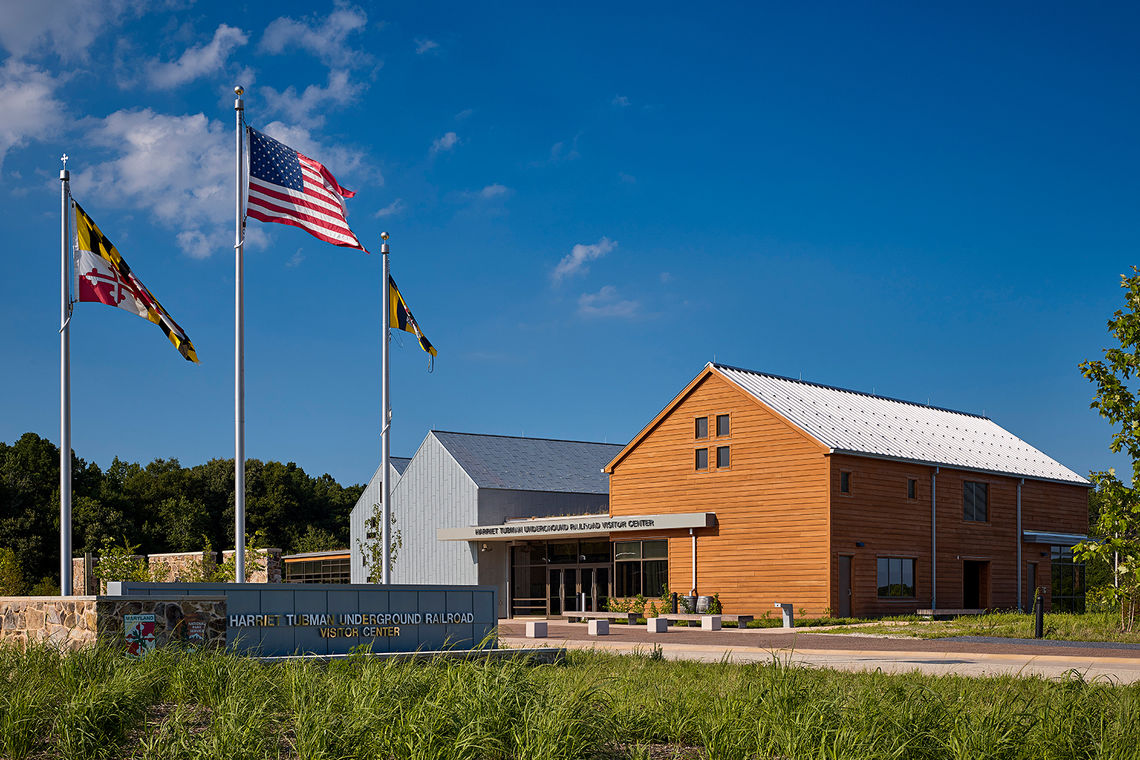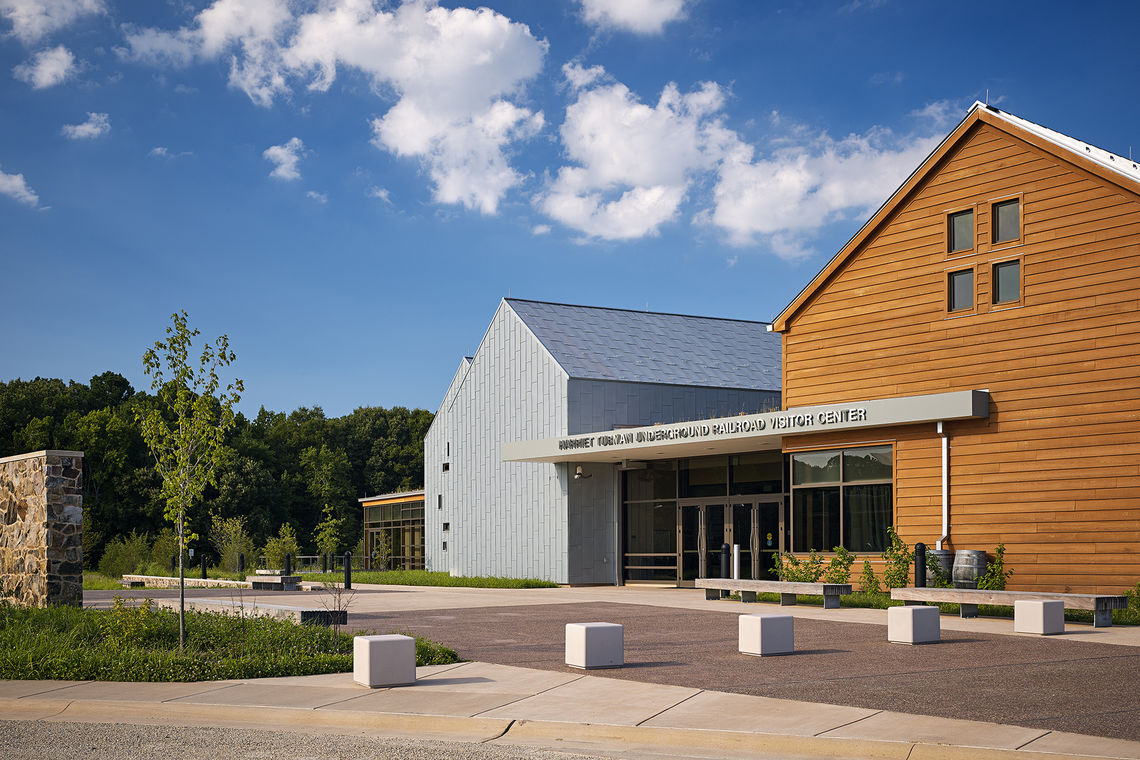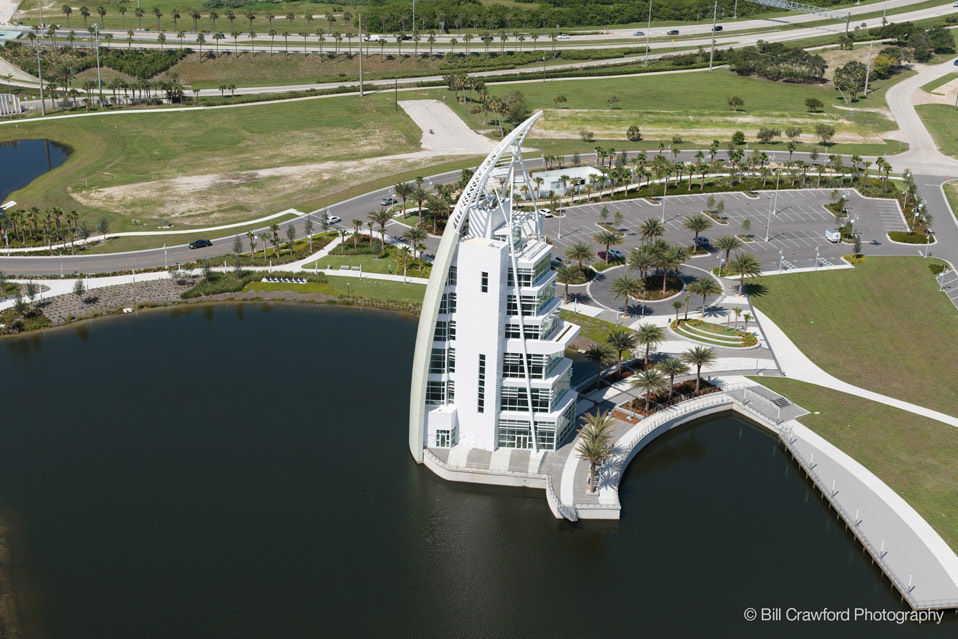While one of the most famous figures of the resistance movement with significant name recognition, little is known about the details of Harriet Tubman’s life.
Through an immersive experience—developed through a successful collaboration of architecture, exhibit, and landscape designers—the new Harriet Tubman Visitor Center provides visitors with the most historically accurate information available and encourages them to experience the landscape and sites where Tubman lived and operated on the Underground Railroad.
On Saturday, March 11, the new Harriet Tubman Underground Railroad Visitor Center officially opened to the public, one day after the nationally-recognized Harriet Tubman Day and commemorating the 104th anniversary of her death. The new $21M center offers a unique opportunity for visitors to immerse themselves in the story of Harriet Tubman and the Underground Railroad.
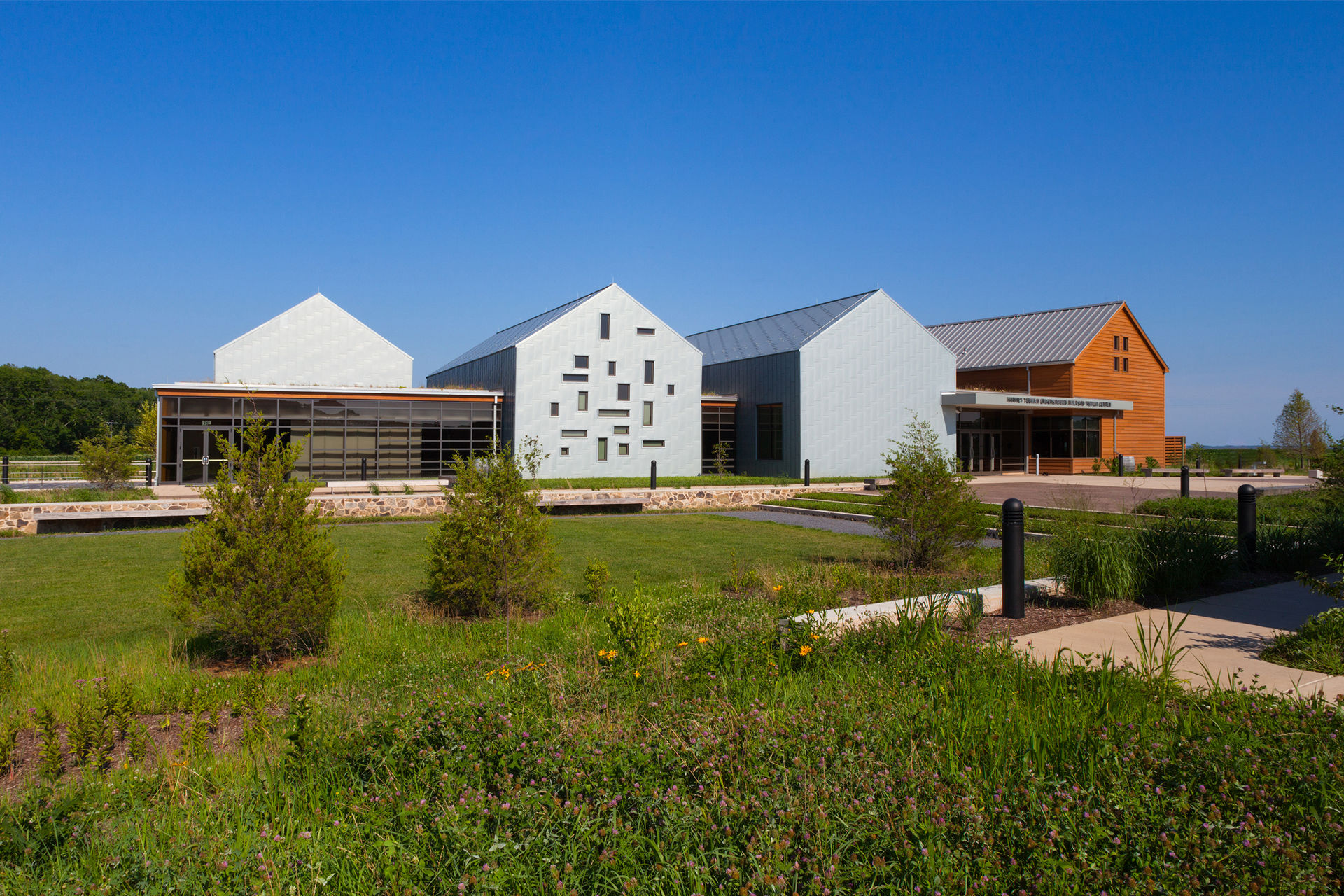
The design for the new Harriet Tubman Underground Railroad Visitor Center, The View North, expresses the importance of traveling northward to escape the circumstances of slavery through an integrated site, building, and exhibit design. GWWO’s design has created a comprehensive visitor experience that begins the moment visitors enter the site from MD 335, continues through the visitor center, and culminates as they tour the memorial garden.
Conceived as a series of abstracted forms that can be interpreted in many ways—from the farmstead vernacular of the region to stations along the Underground Railroad—the new Harriet Tubman Underground Railroad Visitor Center immerses visitors in the story of Tubman’s life.
Joined by a shared entry plaza and terrace, the two structures of the complex, one exhibit and one administrative, frame the view north. The space between the buildings grows wider as visitors venture north—a metaphor for freedom—and the view to the south is truncated by the splay of the buildings, suggesting a sense of oppression similar to that associated with the slaveholding states. The three exhibit volumes are clad in zinc panels that will develop a self-healing patina over time.
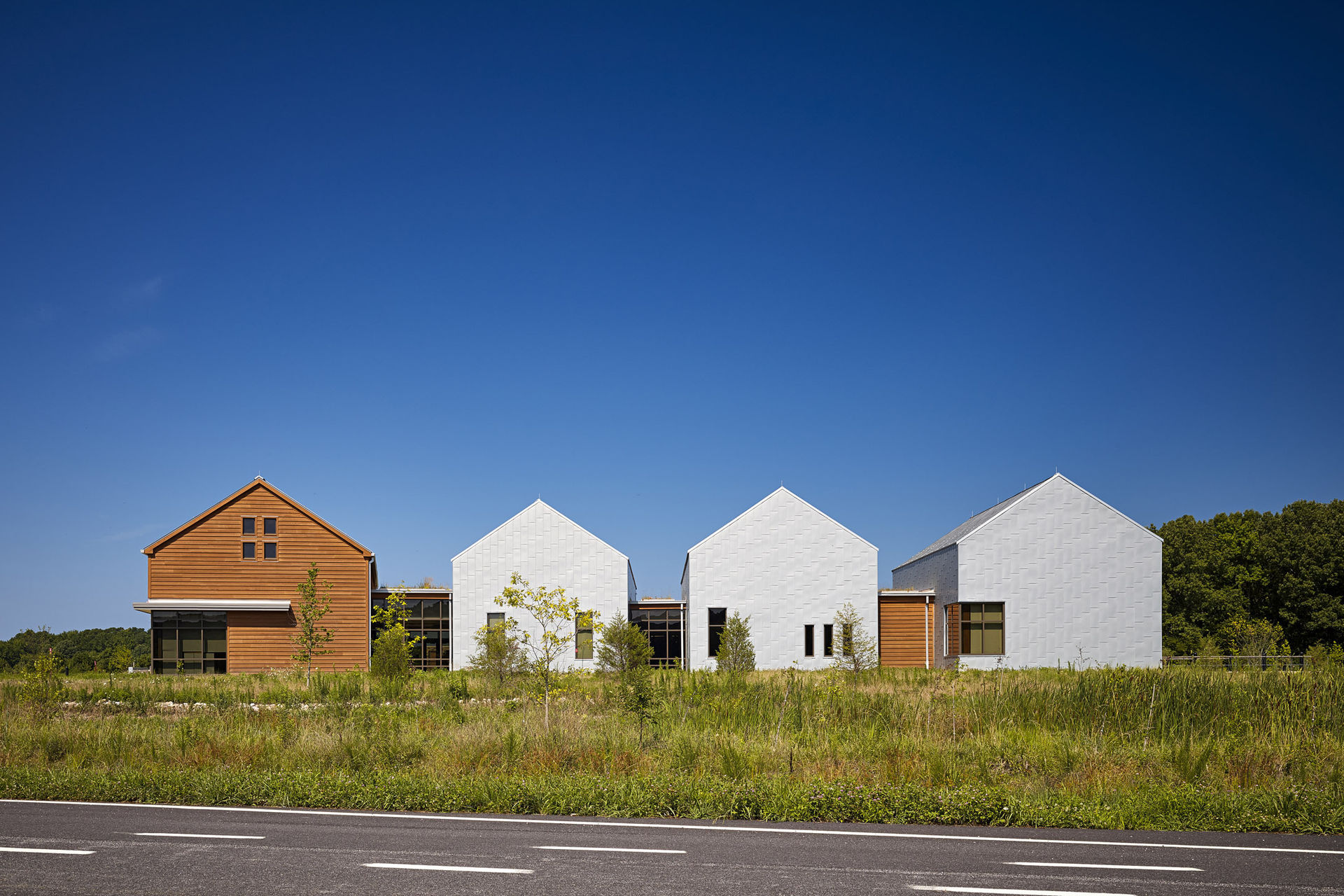
Just as the journey north was not a perfectly linear one for those seeking freedom, the design of the interpretive spaces allows visitors to take detours away from the main route to discover and learn. Views out offer a constant connection to the Blackwater landscape, the memorial garden, and freedom, enhancing the overall interpretive experience.
Upon leaving the center, visitors are directed to the memorial garden where they are offered a direct route north, which then weaves through the site via various loops and returns—similar to Tubman’s circuitous routes and illustrating her willingness to return to the region. Views along the pathway change from wooded areas to fields and marshes, all of which were part of daily life at the time.
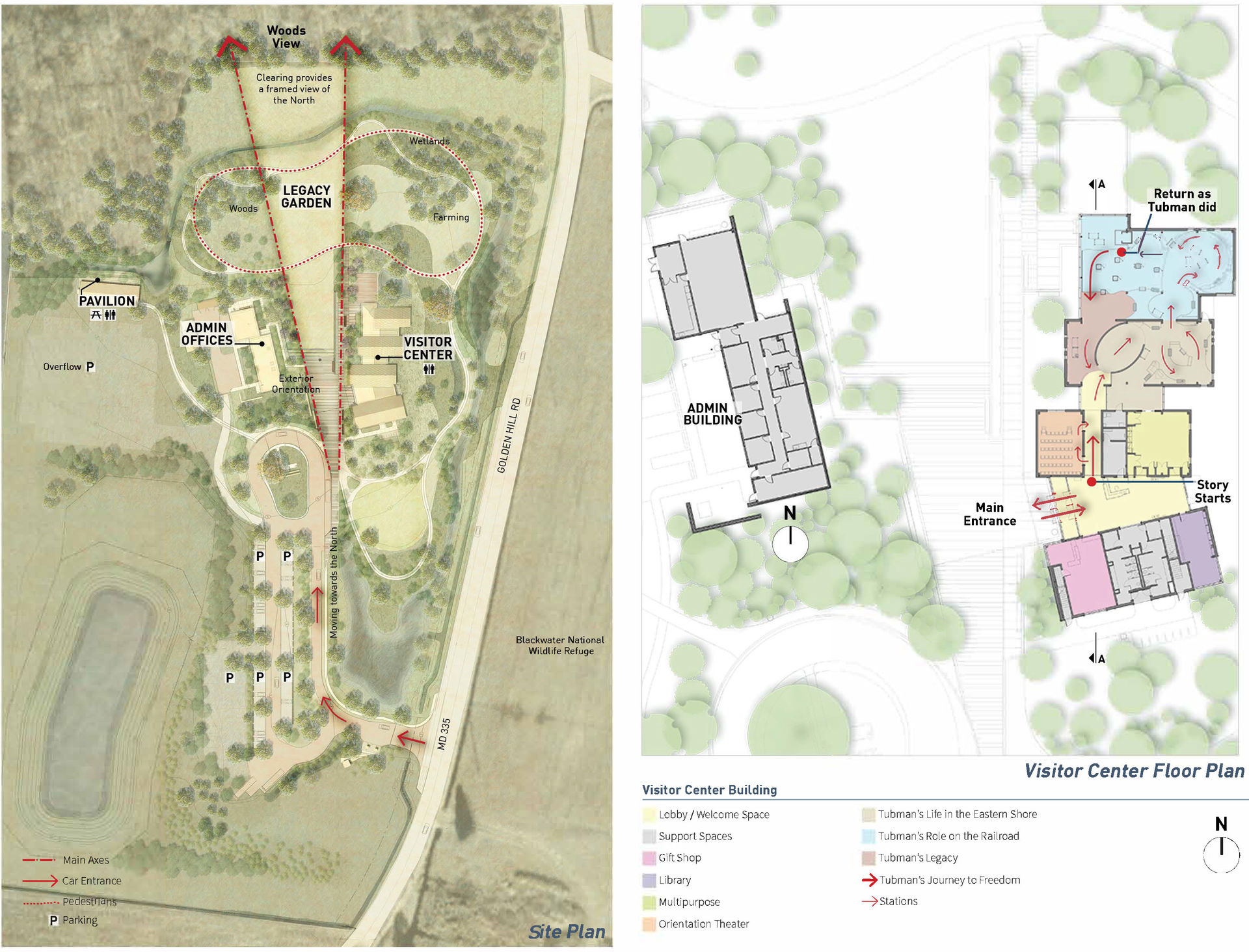
The 15,000-SF center—spread over two buildings, one exhibit and one administrative—features a series of exhibit galleries, orientation theater, museum store, information desk, research library, offices, and support spaces. Engaging displays and exhibits include information on Tubman’s role as a conductor on the Underground Railroad, her work as a freedom fighter, humanitarian, leader, and liberator, the landscape of the Choptank River Region and how it shaped her early years, and the importance of her faith, family, and community. Designed to achieve LEED Silver certification, the new center incorporates a bio-retention pond, vegetative roofs, rain barrels, and other sustainable features.
As the gateway to the Harriet Tubman Underground Railroad Byway—a 125-mile driving tour through the landscapes and waterscapes of Maryland’s Eastern Shore that includes 36 historically significant sites related to the Underground Railroad—visitors now have a central place for orientation and to learn more about Tubman before they embark on their journey, resulting in a more impactful and memorable experience.
For more information about the project and team, click here. To hear GWWO’s Chris Elcock discuss the design for the Harriet Tubman Underground Railroad Visitor Center with WYPR’s Sheilah Kast, click here. For additional project resources, please visit the project-specific sites for the Maryland Department of Natural Resources, the National Park Service, and the Harriet Tubman Underground Railroad Byway.
